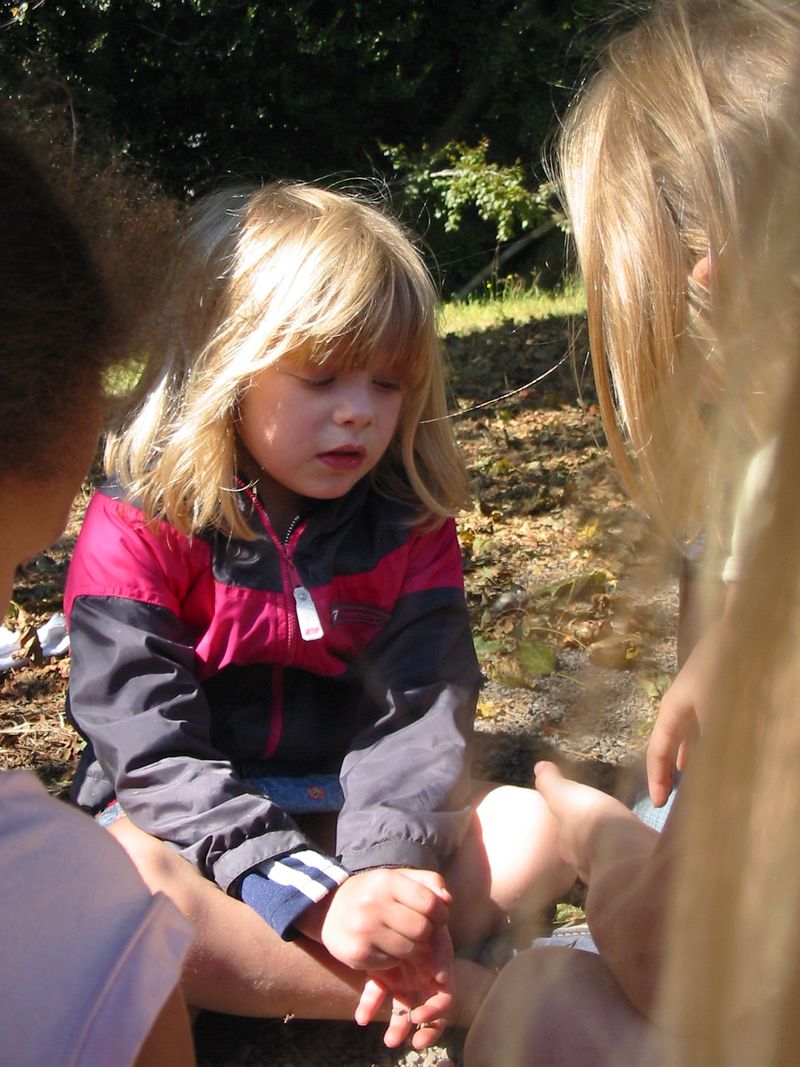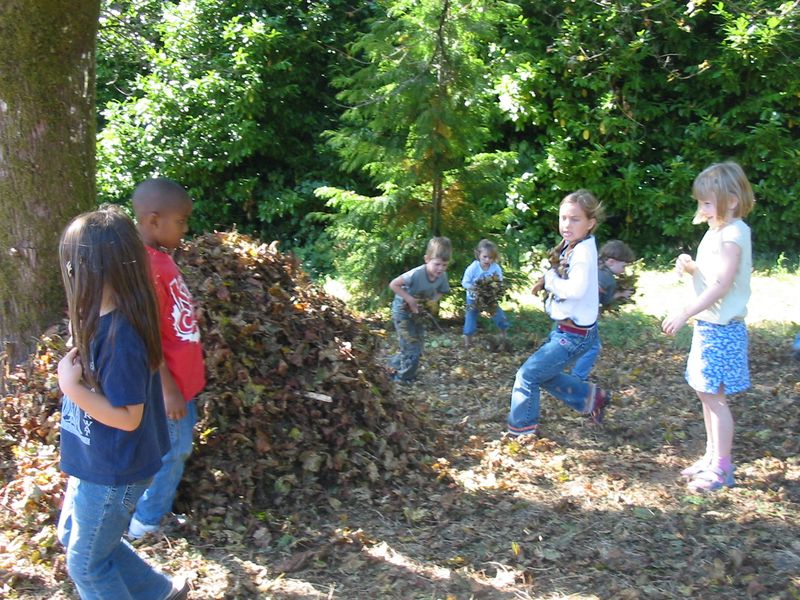Emotional Coaching

At
Opal School, we value and pay attention to not only children's academic and
physical development, but their social and emotional development. Social and emotional development is so
important, because it connects all areas of development. In this post, we share a few ideas from current brain research that
influence our work.
Brain
research helps us to know how important social and emotional development is to
learning. What we remember is
connected to the emotional center of the brain, because it gives meaning to
everyday events. We cannot use or
access information that is meaningless.
Meaning and emotions are closely connected.
We
know that children are in a state of mind optimal for learning when they are in the state
of "Relaxed Alertness". Relaxed Alertness is when a person experiences
high challenge and low risk at the same time. They are in a state of joy, and learning is optimal. This is a state of mind that we try to
nurture at Opal School. In this
state, children are open to new information and their mind is busy making meaning.
Downshifting
contrasts with Relaxed Alertness. In a Downshifted state of mind, a child's brain shuts down and rejects new information. This is when a child will go to old
patterns of behavior; it is directly related to fight or flight. In Downshifting, response is based on fear or anger, anger being the secondary
emotion for feeling hurt or afraid.
At this point, a child is no longer engaged in learning. When the emotions of fear or hurt are
present, this changes the brain's ability to think or problem-solve. This also happens when classroom work
seems meaningless and boring.
Both Relaxed Alertness and Downshifting are natural processes, and one is not better
than the other– it's just the way real-life is. Our role as teachers is in creating an environment that
allows for children to be in a state of relaxed alertness and to help children
through a process we call emotional coaching when downshifting has occurred.
This story will illustrate:
It was a beautful fall day and my group of new first graders and I had taken a hike into Hoyt Arboretum to play. When we arrived in the Lower Meadow, the leaves on the ground inspired a joyful and collaborative pile up.
The group made a quick agreement and promise to one another not to jump in the pile until it was finished. And the meadow was filled with the sounds of laughter and happy anticipation — sounds of connectedness and friendship and the pleasure of being part of something big and important and fun.
As the pile got bigger, it became harder to pile the leaves on top.
And when Jaden came along with her arms full, she lost her balance as she reached for the top, and fell in.
Oh, how quickly the sounds of the meadow changed. Accusations flew and Jaden began crying. A terrible shift in the air. I was sad and angry, too. How could the group turn on Jaden so quickly? How could she find a moment to clarify what happened? How could she express her own frustration with having fallen in? It was a horrible thing to witness — the jump to conclusions of the group. The flash of assumptions. The loss of joy.
So I said to everyone, "Wait a minute, wait a minute. Do you hear how different things sound suddenly? Do you feel how different everything feels? Does everyone else notice that? What can we do? Does anyone have ideas?"
By this time, Jaden was sitting on the ground, continuing to cry. That sound pulled everyone in to find out more.
As they listened, they found out what had really happened. I encouraged them to share their perspectives, but was careful not to tell them how they should be feeling, only to mirror back to them what I observed happening. It only took a moment. Jaden was heard and they were re-engaged with their master plan.
They self-organized into a line and everyone took a turn jumping in. (And no one bumped into that tree!) A return to the joy and the sounds of a happy, sunny afternoon with new friends and partners.
So let's revisit that story to see how illustrates the concepts of the emotional coaching process as described by the Talaris Institute.
We
saw a community of learners experiencing joy and fun together (Relaxed
Alertness).
Something
happened – an incident – Jaden fell down in the pile of leaves and everyone is
angry (Downshifting).
The teacher supported the children using a process called Emotional Coaching, a
researched-based way to help children and adults handle their feelings.
1.
Start with yourself. The teacher recognizes her own
feelings first, her frustrations and thinks about how she is going to handle
this. She calms herself before she responds to the children.
2.
Connect children to their
feelings.
The teacher reflects back to the children that they were so joyful. And she asks,
“What are you feeling now?” “What changed?”
3.
Listen with empathy and
honor emotions. She encouraged the children to talk about what was happening without
judging what they were feeling. She supported all voices and expressed sympathy
for the situation and the feelings that accompanied it.
4.
Naming emotions. The teacher helped the children
identify all their emotions and did not tell them how they should be feeling.
5.
Support solutions to
problems.
The teacher challenged them with the question, “How do we return to the joy?” She
let them know that they were capable of solving this problem and restoring the
trust they have as a community of learners.
Children
who develop these skills are on their way to becoming emotionally healthy
people.












I am a teacher at Opal School and each time I hear or read this story I am always struck by the emotional reaction of the teacher in this situation. What a retraining of ourselves we must go through to be able to first think about how we are feeling and what our emotions are in regards to a situation with students. How incredible that Susan acknowledged her own emotions first, sadness and anger, but then was able to shift within a matter of seconds to asking the questions that would pull the group out of the downshift enough to listen. It is so easy to get lost in our emotions. I’m wondering what strategies other people have for coming out of a moment of downshifting so that you can reengage with your students in a healthy and productive way?
The comment , “children who develop these skills are on their way to becoming emotionally healthy people”, shows how important our interactions with the children in our care have proven to be! It’s important to keep that in mind while we assist young people in learning the skills of interaction and emotion good health.
I also liked exploring the website for the Talaris Institute…this is a good one to share with the parents.
The statement that anger is a secondary emotion for feeling hurt or afraid rang very true for me. At the beginning of the school year a boy in my Head Start classroom was screaming about the room, throwing toys etc. My co-teacher was working with him as I tried to lead group. Out of frustration at not having success she finally asked him, what is going on for you, how are you feeling. At her question he broke down crying and said, teacher I am scared. she gave him comfort, they talked through what was scary and she supported him in coming back to circle. We continue to remember his comment and whenever there is something new in our room we make sure to offer support to this child so that he is able to learn and grow rather than retreat into fear. It has had a huge impact on our classroom remembering that anger is the secondary emotion.
“Relaxed Alertness” is such a great concept. I love the idea of high challenge / low risk environments for optimal learning. It is a state we should all aspire to. I believe children naturally operate in this zone. However, they soon modify their behavior to match the expectations of the adults in their world. It’s interesting how if the adults provide support and facilitation that relaxed alertness can be quickly restored.
I agree with Lane that the Talaris website will be a good one to share with parents. This is also a way for all community members to be on the same page with how to handle different situations even when children are not with a consistent adult.
I also agree with the previous comments on the sharing of the Talaris website. It is a valuable piece to share with all the community whether it is the parents, school staff, coaches, etc. Having a consistent message and ways to handle situations with everyone who interacts with children is key.
Someone told me, in a rough translation to English, that one of my children needed ‘an escape route’. This for me meant silent time, waiting for a child to be able to communicate, because so often I jump in with ‘what’s going on?’ ‘what happened?’. Once I read ‘How to listen so Kids will Talk’ I shut up, and magic happened, children began to NATURALLY tell me how tehy were feeling, and then I could listen for a good long time, often without a word form me, the child or children would have worked through the emotion, identified the cause, and found resolution. I also found that telling children how you think they are feeling can be a real wind up! ‘I see you are cross.’ can result in further downshifting and fury, because the child is not being validated, it is a judgement. But I still do it, I am excited to keep reading this research because it is such an important role. I would love to hear of more social stories that teachers use as a lever too.
I love this story and the processes involved. There has been a culture in recent years of parents/teachers interpreting feelings before the child has the opportunity to work through how they are feeling for themselves – “I see that you are feeling angry….”. I am certainly going to use this process – may take some practice though!